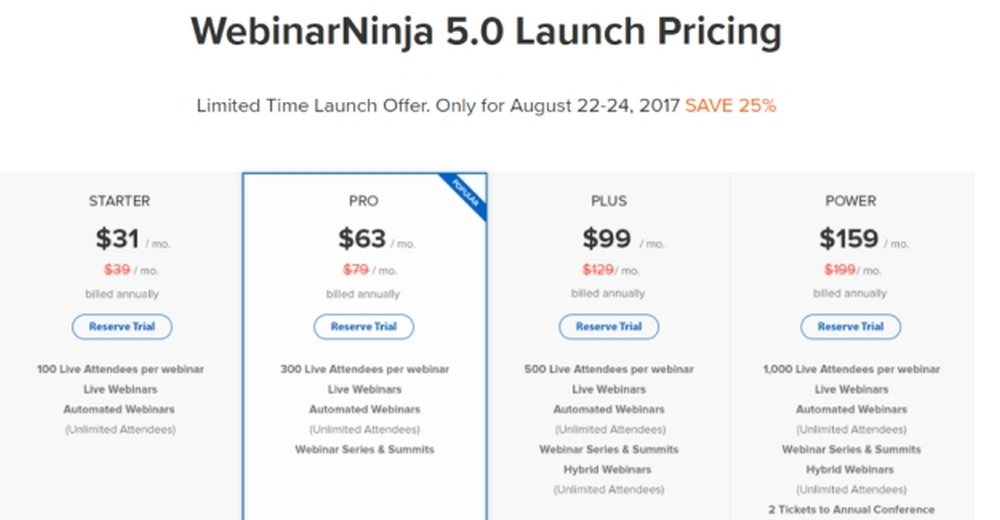5 SaaS Sales Principles To Boost Performance
Timo Rein
SaaS sales are increasing, and the industry is getting bigger. We’re at the same stage as the PC market in 1983 and the smartphone market in 2003, according to TechCrunch.
Having a product people want is key. It will only take you so far, though.
To win the game of SaaS, a sophisticated sales process is compulsory. Here are some key SaaS sales principles you should know about to boost performance in your own team.
RELATED: 11 Insanely Effective SaaS Sales Secrets Right From The Salesforce Playbook
In this article:
- How to Minimize Discounts
- Creating a Complete Full Overview of Personas
- Lead with Customer Success
- To Boost Performance, Using a Consultative SaaS Sales Method Is Key
- Consult the Right SaaS Sales Process Metrics
SaaS Sales | Grow Your Business and Boost Performance with These 5 Essential Principles
How to Minimize Discounts
In this article, I’ll outline five SaaS sales principles that will help you boost the performance of your current systems. If you don’t have a sales process, these will act as a strong foundation as you build one.
A SaaS business operates within a complex sales model. Due to the monthly recurring revenue (MRR), your system might apply a 10% discount on month one across an entire year.
As a result, this initial discount cuts into profits month-on-month. This compounding effect can severely harm the growth of your company.
The answer is to always use your bottom line as your true north. The conversation should always be toward the value your SaaS product provides.
If objections on price arise, highlight how your product will make work easier.
You can also combat discounting and increase SaaS sales in three ways:
- Extras and Bonuses: It’s okay to throw in some extras to ramp up the perceived value. Consultations and extra features can be great offers to help lead prospects across the lines.
- Price Transparency: Break down pricing according to the back-end service. What expertise and technologies do you own that others don’t? How does this apply to the overall value your SaaS software offers?
- Risk-Managed Promotions: Many SaaS companies offer a huge discount for the first three months a customer signs up. This is an intelligent approach that looks at the lifetime value (LTV) of a customer. In other words, you’re preemptively playing the discount card on your terms.
WebinarNinja took this controlled approach to the launch of their new and improved SaaS product. For a limited time, they offered a pre-launch discount for new customers:

The key takeaway is to understand the value of your product. Don’t cheapen your offering by allowing your customers to haggle on the price.
Creating a Complete Full Overview of Personas

Generating SaaS sales means knowing your ideal customer. Always do your homework on personas.
If you close a deal with the wrong kind of customer, you risk hurting the business.
Those who aren’t a good fit take the same time and resources as the perfect customer. The difference is they’re more likely to churn, affecting the bottom line.
Sales reps and sales leaders must know the characteristics of the ideal customer.
Be comfortable with disqualifying customers in order to save time. Chase the clients who will get the most value from your SaaS product.
There are several ways you can build the perfect customer profile to boost performance and SaaS sales:
- List your best customers: Who are the top 10% of customers you can confidently ask, “What value are you getting out of our product?” The monetary amount should be comparative to what they invest in you.
- Sell in three stages: These include:
- Provide the promise that your SaaS product can help them solve their challenges.
- Implement your product into their workflow. Getting customers to pay is one thing — convincing them to use your SaaS solutions is a different game in itself.
- Help them identify your SaaS product creates value and solves their challenges.
- Know their commonalities: Look at your top customers and ask yourself: what do they have in common? These attributes can include:
- Size of the organization (revenue, number customers, and employees)
- Job titles
- Industry they serve
- Business years
- Barriers to buying your SaaS applications
- Reasons for buying your solution
- Buying process
The above list is a small sample of the information you should collect. Get as much insight and data on your ideal customer as possible.
If you can’t think of your top 10 customers, forget this article and go look for some. Invest in your current customers with better support. Read the next section to learn how.
Lead with Customer Success
Now, you know who your ideal customer is. To create SaaS sales, ask the next question: what does success look like to them?
If your product doesn’t deliver upon what your sales reps promise, users will churn like hotcakes. You must always put customer success over quotas.
It involves being honest and putting their needs first even if it means missing monthly targets.
What exactly is “customer success” when it comes to SaaS sales?
The simplest definition comes from Lincoln Murphy of Sixteen Ventures: “Customer success is when your customers achieve their desired outcome through their interactions with your company.” Lincoln’s definitive guide is one of the best resources on this topic.
To talk about customer success will take an entire article in itself. Instead, here are some high-level principles to remember when mapping out the success of your customers:

1. Make It a Part of the Organization’s DNA
Customer success starts at the top. It’s a cultural shift, which means the boardroom drives it. For a SaaS company to understand and deliver upon customer success, it has to come from every department. It’s a mindset that leads every single decision within the business.
Once customer success becomes part of the organization, it’s important for C-level executives to make sure everyone is working toward it.
2. Build a Dedicated Customer Success Team
This isn’t a capability that sits in marketing, sales, or even customer support. Customer success needs its team with a clearly defined goal.
In the early days, Unbounce hired Ryan Engley as director of customer success. They saw the importance of this function from the beginning and pushed it from day one.
As a result, they doubled their MRR twice in their first two years of business.
3. Remember, Customer Success Is a Two-Way Street
This isn’t a fluffy philosophy that creates an intangible “customer first” message. Customer success has real, measured metrics attached to them.
Sometimes, though, it’s important to set boundaries and learn to say no. If you always do what the customer wants, you may risk putting the company in jeopardy.
Therefore, you must build policies around customer success and how you deal with things like feature requests. Don’t let customers steer the product roadmap no matter how big a deal they are.
RELATED: Behind the Scenes of a High-Growth SaaS Company
4. Build Strong Connections

Traditionally, B2B SaaS sales have always been done face-to-face. But the SaaS world is flat.
Reps must build strong connections over the phone and via email.
This comes down to the development of soft skills. Building rapport over the phone is tough.
With the right training, however, it is possible and can help boost performance.
Hiring the right people from the start makes this SaaS process even easier.
Ensure you have a method for identifying soft skills in potential reps when they’re going through the recruitment process. This can involve a phone test with someone on the sales team or even with a prospect.
Direct communication is key, but you can also strengthen relationships across other channels.
Smart sales professionals understand their prospects are active on social media and other communities. Therefore, it’s important to have systems that nurture prospects via these channels.
Engage with prospects only when there’s something of value to share. An article they may find interesting or a response to a tweet is fine.
These kinds of touchpoints are simple but can go a long way to diversify and strengthen the relationship. In the process, you can generate steady SaaS sales from your loyal customers.
5. Be Relentless and Systematic with Follow-up
You cannot close a prospect on the first phone call. It takes a consistent and relentless amount of follow-up to do it.
The problem is 44% of salespeople give up after one follow-up. About 80% of sales need five follow-ups after the initial meeting.

- Avoid the cherry-picking trap: A smart sales rep spends most of their time with the hottest leads. The problem comes when they ignore the warm ones.
They grow cold as the reps focus on the hot leads. Make sure there’s a repeatable and efficient lead response system at all stages of the cycle. - Close the gap: Everyone talks about closing the gap between sales and marketing, but what does that look like? Consider this. Marketing is in charge of generating leads, and sales take care of closing them.
What about nurturing them? This is where collaboration between these two departments is most valuable.
Use sales enablement, subject matter experts, and consultative selling techniques to warm up prospects. - Educate: Follow-up messages should provide your prospects with information. Give them a valuable education that will help them make the right decision.
Without data, you’re only pestering them. Make sure your follow-up is informative. - Repeat: You should know your value proposition like the back of your hand. It doesn’t mean, though, your prospects will understand the first time.
Don’t make the assumption your prospects get your solution after one call or demo. Repeat key pieces of data across all your correspondence.
To Boost Performance, Using a Consultative SaaS Sales Method Is Key
When it comes to SaaS customers, information about the products you are selling are readily available online. In fact, every talking point and questions you might want to talk about with your customers is likely something that they already know about.
So then, how will you be able to craft a sales strategy that works for a well-informed target market? Simple: by focusing on being a consultative figure rather than a solution seller.
Instead of highlighting the benefits of your product and the reason why your client should take you up on your offer, you should be someone that will help guide them towards a solution.
There are three important steps that you should do when it comes to consultative selling. These are the research, active listening, and the qualifying of a prospect.
1. Research the Needs of Your Prospect

To be able to address the needs of the prospect, you should do your research. This is especially true for a technology-driven sector like SaaS.
Learn as much as you can about the prospect before your call. Anticipate what their problems or areas of difficulty may be so you can already come up with ways on how your product or service can provide a solution for them.
2. Actively Listen to Your Prospects
While researching ahead of time is essential, that doesn’t mean you don’t have to listen to the prospect. While you may already have some idea of who they are and what their issues may be, there’s still immense value in hearing it from them.
You might even learn a thing or two or may need to throw your preconceptions out the window.
Since your research may not direct you to the true pain point of a prospect, you have to make sure you listen well. Pay attention to what the customer is saying, and craft your answer based on what they’re saying, not based on your research or preconceived notions.
By actively listening to your prospects, you might even help them discover where their true problems lie instead of where they think they come from.
3. Qualify Your Prospects
Once you manage to figure out where their true problems lie and are able to provide a solution for it, it’s time to figure out whether you are that solution they’re looking for.
You must have a genuine desire to help your prospect. People can detect if you’re not being genuine and just want to push products, which can turn your prospect off.
Even if there doesn’t seem to be an impending deal because you’re not the right fit now, try to develop a rapport and relationship with the prospect. It’s still possible things may change in the future and you’d be a better fit, so you’d want to remain in good terms with them.
Consult the Right SaaS Sales Process Metrics
SaaS companies rely a lot on recurring revenue, which is what separates them from other companies. Since it’s on a subscription model most of the time, conventional metrics in sales won’t really cut it for SaaS providers.
Here are some of the benefits of utilizing the right sales metrics for SaaS organizations:
- You can boost performance in the right aspects of your organization.
- You’ll also be able to figure out which parts of the sales process need improvement.
- The right sales metrics can help with expectation management and in creating more accurate sales forecasts.
Two essential metrics SaaS organizations should consider are:
- Customer Acquisition Cost (CAC)
- Monthly Recurring Revenue (MRR)
Generating your desired SaaS can’t be done overnight. It requires following basic principles that guide you in creating a stable, reliable business plan.
It demands a strong relationship between the prospects and SaaS providers.
We hope this guide has helped you understand more about these SaaS principles, and how to utilize them to boost performance.
How have you structured your SaaS sales system to boost performance and reach success? What principles do you and your reps rely on to win the day? Let us know in the comments section below.
Up Next:
- 4 Strategies for Training Employees on Salesforce & Other SaaS Products
- How Venture-Backed SaaS Startups Fuel Sales Growth
- Happy Thanksgiving
Editor’s Note: This post was published on January 22, 2018, and has been updated for quality and relevancy.